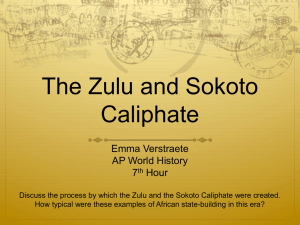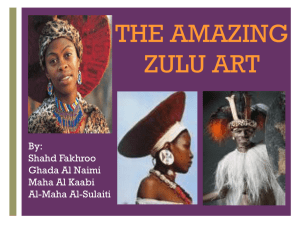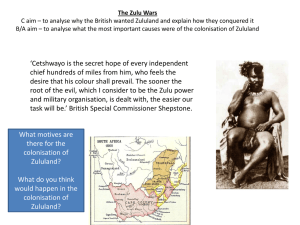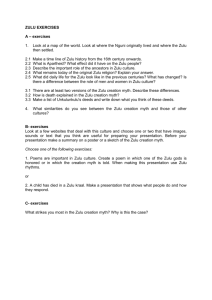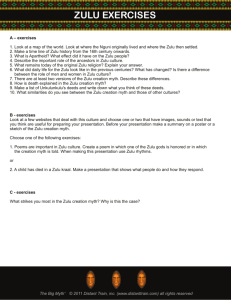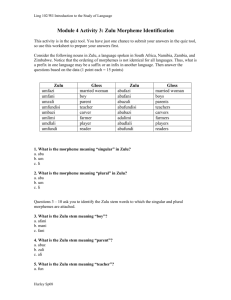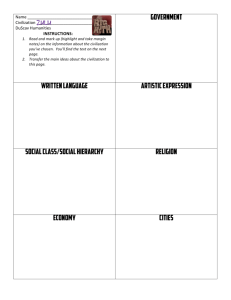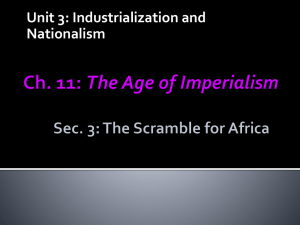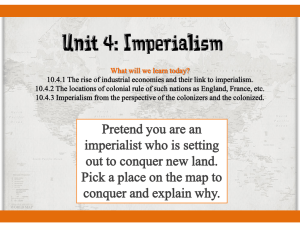Resisting British Control
advertisement
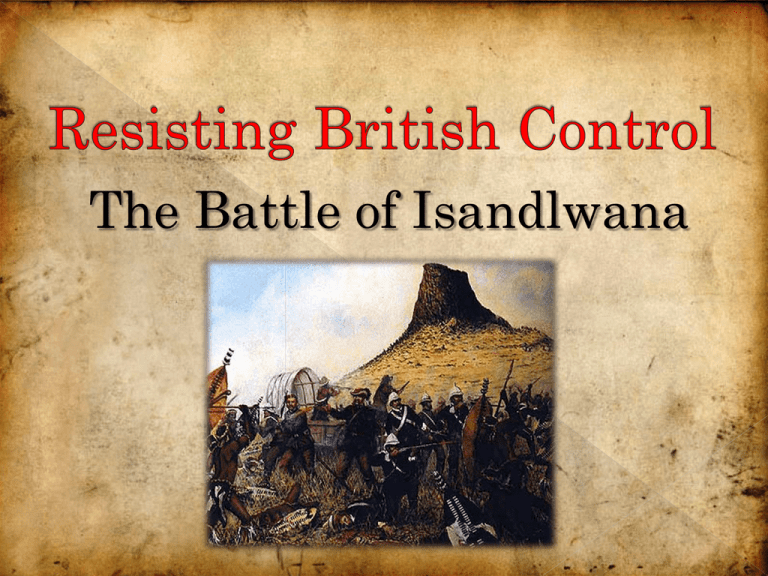
The Battle of Isandlwana Cape Colony, Natal under British rule The Transvaal (also known as SAR) and Orange Free State under Boer control Different African kingdoms, including the Zulu Kingdom (Zululand) The British wanted even more land in Southern Africa Rich mineral deposits found in Kimberley made South Africa more desirable They later claimed this area Zululand on trade route to the East and was next on their list They wanted South Africa as a whole The British knew that the Zulus would resist their authority The British wanted to overthrow the king of Zululand, King Cetshwayo They put British Soldiers on border of Zululand Ultimatum: demanded that Cetshwayo disband his army January 1879: Cetshwayo refused – British invaded Zulu suffered great losses next few days 20 000 Zulu soldiers came across British Soldiers at a valley near Isandlwana Hill British were unprepared and completely overwhelmed Bloody battle, fought at close range More than 1200 British Soldiers were killed in this battle and almost as many Zulu. One of the worst British army defeats they have suffered. “We...killed a great many of them by throwing our assegais at short distance. We eventually overcame them in this way.” The Zulu force attacked the mission station Rorke’s Drift – 500 Zulu killed Zulu were seen as powerful and savage British took revenge: › Battle of Khumbula › Battle of Gigindlovo Final defeat at Battle of Ulundi Cetshwayo went into hiding and was later exiled The British finally took over in 1887 Why did this war happen? 2. When did it happen? 3. How did it happen? 4. What were the consequences? 1. Source Evaluations & History on Film They knew that the Zulu King Cetshwayo would refuse the British to take control of the entire South Africa including Zululand. 2. The Cape Colony and Natal 3. King Cetshwayo 4. Rorke’s Drift, Khumbula, Gingindlovu and the final defeat at Ulundi. 5. Own answer. 1. The Battle of Isandlwana depicted by a British Artist The British are using guns and the Zulus are using assegais and shields. 2. Today weapons are more destructive and can kill many people at once. 3. Own answer. (fierce, powerful, savage) 4. More British dead than Zulu (is that an accurate depiction?) The British look more afraid and also reserved against the Zulu’s fierceness The Zulu’s are everywhere and the British is surrounded 1. •This is part of a History Channel documentary •The ‘Real Zulu’ •Based on accounts of British people •Historians put this film together •‘Zulu Dawn’ •Film made in 1979 •Made for the public •Filmmaker’s viewpoint Do you think the first or second film is more accurate, and why? Do you think that one of these films are one-sided to either of these groups? Who is the victim? We always have to choose our sources carefully! Dabulamanzi, brother of King Cetshwayo and the Zulu commander who massacred the British Army at Isandlwana Uniforms of the 24th Regiment Zulu warriors
